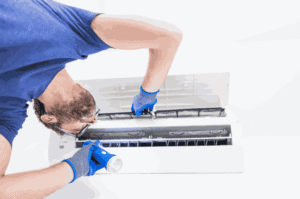Preparing for an HVAC installation or replacement is not simply about calling a contractor and setting a date. It’s a process that involves planning, understanding the current state of your home’s system, and being ready for the impact that such a project may have on your daily routine. A new HVAC system is a long-term investment in comfort, efficiency, and energy savings. Taking the right steps beforehand is important so the installation or replacement process goes smoothly. We will explore practical and thoughtful ways homeowners can prepare their space, evaluate their needs, and coordinate effectively to minimize stress during this transition. Whether upgrading due to age, efficiency, or an unexpected breakdown, knowing how to get ready can make a meaningful difference in results and satisfaction.
Key Steps to Take Before Your HVAC Installation Day
- Evaluate Your Current System and Goals
Before any installation begins, it’s important to understand why you are replacing your current HVAC system. Some homeowners deal with systems that no longer cool or heat efficiently, while others seek quieter performance or lower energy bills. Take time to document the issues you’ve been facing with your existing unit, such as uneven temperatures, noisy operation, or frequent repairs. Then consider your future goals: Do you want cleaner indoor air, better humidity control, or smart thermostat integration? You can discuss your goals thoroughly with your installer by clearly outlining what hasn’t worked and what you’d like to see improved. If you’re located in Southern California, reviewing services in your area, such as those offered at https://veteransheatingandcooling.com/service-areas/san-diego/, can also help you understand your local options and what kinds of HVAC solutions are commonly implemented in homes similar to yours.
Additionally, consider your home’s current insulation, window seals, and airflow patterns, as these influence HVAC performance. Proper preparation begins with clarity, so spending time on this evaluation will guide better system size, features, and layout choices. It also helps avoid surprises during installation by aligning expectations early on.
- Assess the Condition of Ductwork and Vents
Many homeowners assume HVAC installation only involves replacing the central unit, but ductwork is critical to how well the system performs. If your ductwork is old, leaking, or poorly sized, it can undermine the efficiency and comfort of even the most advanced systems. Before installation day, arrange for an inspection of your ductwork to identify areas that might need repair, sealing, or even complete replacement. Check for visible signs of wear, such as rust, kinks, or sagging ducts in attics or basements. If vents in certain rooms deliver weaker airflow, that’s another sign of underlying duct issues.
Also, ensure vents and registers are accessible and not blocked by furniture, rugs, or clutter. A well-prepared duct system supports even temperature distribution and ensures the new HVAC system performs at its full potential. Ignoring this step can lead to higher energy use and diminished comfort.
- Clear the Work Area Indoors and Outdoors
HVAC installers need access to multiple parts of your home—indoor units, outdoor condensers, vents, and control wiring. One of the most helpful things you can do is prepare these areas so technicians can work safely and efficiently. Start by clearing away items near your indoor HVAC unit, such as storage boxes, shelves, or laundry items. If the unit is in a utility closet, ensure the door opens fully and that there is at least three feet of clearance around the unit. Outdoors, remove debris, garden tools, or vegetation surrounding the condenser unit.
Trimming nearby bushes or removing overgrown plants can reduce installation time and protect the new equipment from future airflow restrictions. Also, a walking path from the entrance to the HVAC locations must be cleared to avoid delays or hazards. A tidy workspace helps your installation go faster and shows consideration for the professionals handling your project.
- Discuss Electrical and Structural Requirements
Modern HVAC systems often require updated electrical support to accommodate newer components and energy demands. Before the installation day, confirm that your home’s electrical panel can handle the new system’s load. If upgrades are needed, it’s better to complete them beforehand to avoid delays. Some HVAC systems involve additional structural considerations, such as mounting brackets, condensate drainage lines, or new duct configurations. These can require cutting into drywall, adding framing support, or reinforcing outdoor units.
Ensure your HVAC contractor walks you through what will be altered or added during the installation. Ask about the timeline, the tools involved, and whether you’ll need to vacate the space temporarily for safety. Understanding these needs in advance allows you to plan for power shutoffs, noise disruptions, or even short-term accommodation if major construction is required. Proactive discussions will help avoid surprises and reduce the stress of unanticipated work.
Properly preparing for an HVAC installation or replacement is more than a checklist—a thoughtful process that enhances comfort, safety, and long-term satisfaction. From evaluating your current system and setting clear goals to clearing workspaces and understanding technical requirements, each step ensures the project unfolds without unnecessary issues. Whether it’s your first installation or a necessary upgrade after years of service, approaching the process with preparation and clarity will help you make the most of your investment for years to come.
For more, visit our website Home Threads







